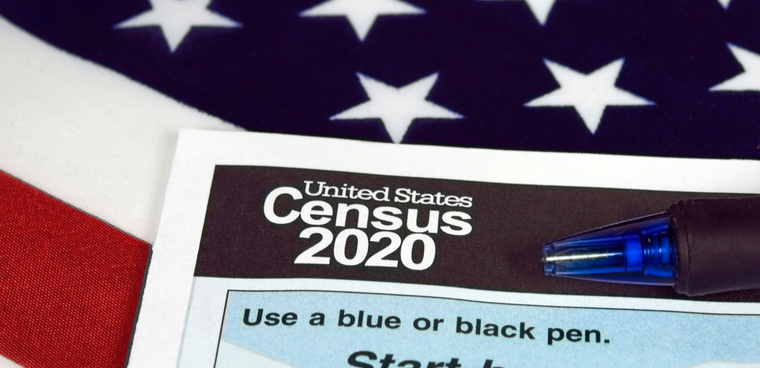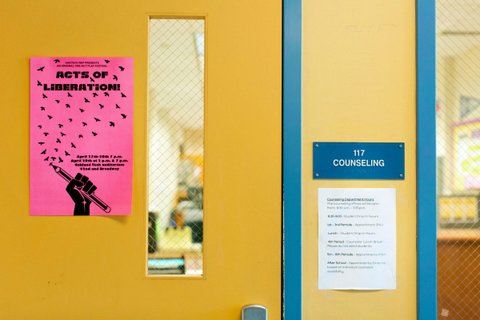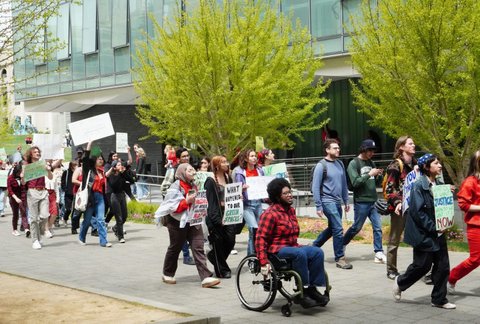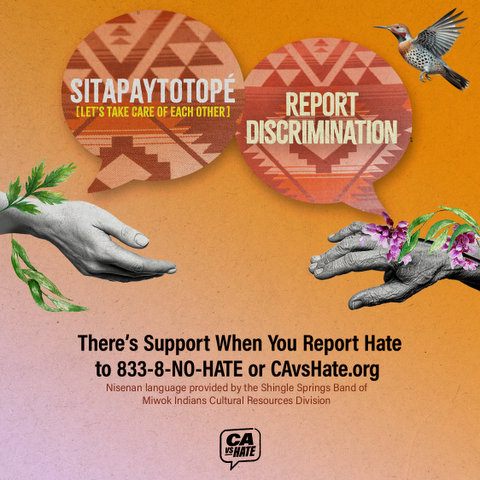
12 Mar California Tribes Hold Festive Launch For 2020 Census

By Mark Hedin, Ethnic Media Services
EUREKA, CA — A kickoff event for getting a full count of California’s Native American population in the 2020 Census featured heaps of swag, a free feast, a live band, dance performance, bingo and more.
“We’re really happy with the turnout, even if it’s for the bingo and free food,” Madison Flynn, assistant director of the Northern California Indian Development Council said during one of the speeches exhorting census participation that organizers peppered into the mix along with the evening’s other activities.
“We’re trying to make something visible that’s been invisible too long.”
The event was held on the evening of March 6 at the Sequoia Conference Center in Eureka, Humboldt County. Flynn and other speakers emphasized that when it comes to allocating government spending, decision-makers always want data — “How many people will benefit from this program?” And across the United States, that means census data.
The latest estimate is that every year, $1.5 trillion in federal tax spending is distributed based on that data, which is only collected once every decade and not updated till the next census, 10 years later. For the 2020s, that “once” begins in mid-March, when mailings will be sent to every known address with instructions on how to complete the nine-question census form.
Separating the dining tables and stage from the child care area and a huge movie screen were tables set up by the U.S. Census Bureau, the California Governor’s Office, the California Native Vote Project, the California Indian Manpower Consortium and more, offering informational flyers, T-shirts, trinkets, treats and more.
There were piles of T-shirts handed out, most of them including messages urging people to be counted in the census and to identify themselves by their tribal affiliation, whether Karuk, Yurok, Hoopa Valley or Tolowa Dee-ni’. Although the census form allows people to identify themselves however they see fit, tribal advocates urged people to choose only one, to maximize to their tribe the share of funding and representation tied to census data that would accrue per person counted.
Speakers addressed themes also detailed in the informational flyers available at the various tables, such as: “50 Ways Census Data Are Used,” “Common Questions About the Census,” “The 2020 Census and Confidentiality,” “Our Kids Count” (the census is intended to count everyone, of every age, and kids younger than 5 are the most-frequently overlooked population nationwide. Native Americans are the most-overlooked ethnic population – by at least 4.9% in 2010, the Census Bureau figures) and more.
“There’s hope that if we show up we can actually be heard and take the power that was taken from us and flip it,” Flynn said. “Everybody’s thinking that nobody exists here and tribes are extinct. Part of what we’re trying to do is talk about the fact that native people are still here.”
The Census Bureau is sending out mailings nationwide on March 12 with instructions on how to fill out the census online, the preferred, least-expensive method for the government to perform this Constitutionally required duty. People can also fill out the questionnaire over the phone and, as a last resort, the Census Bureau will send out “enumerators” it has hired – and there are still jobs available to do this in Humboldt County, paying $18 per hour – to visit addresses that have not responded, starting in May.
People can also visit community centers to fill out the census, which is expected to take, on average, about 10 minutes. Three places in Smith River for doing this are: the Howonquet Hall Community Center during open council meetings and on “Census Day” (April 1), the K’vsh-chu Tribal Office from mid-March to May 8, Monday through Friday, 8 a.m. to 5 p.m, or the Education Department, on the same dates but only from 10 a.m. to 2 p.m.
There will be more, such as the Klamath or Weitchpec tribal offices on April 1, May 1 or June 1 from 10 a.m. to 7 p.m., the California Indian Big Time on April 4 in Arcata, the First 5 Humboldt event in Eureka April 7 and 8 and the First 5 Delnorte in Crescent City April 10-11.
“We are in a climate where this really, really matters. It’s California versus the federal government now,” another speaker said. California has allocated $187 million toward getting a full count of the state’s people in the 2020 Census, more than all other states combined.
Getting a complete count in Indian Country has always been a challenge for many reasons, including mistrust and skepticism of government, poverty, inaccessibility and more. Recent changes and proposed changes, from the shift to online data gathering and the attempt — ultimately rejected by the Supreme Court — to add a question about people’s citizenship, are expected to make it even harder this year to get accurate information about who’s in America now and where.
“An accurate counting of Native Americans is particularly important because of the government-to-government relationship tribes have with the federal government,” Bill Anoatubby, governor of Chickasaw Nation, said in a remark posted on the screens set up throughout the hall. “The federal government has treaty responsibilities to provide education, health care, housing and other services to Native Americans. Therefore, an accurate count of people from each Native American Nation or Tribe is essential in outlining the details of those responsibilities. By participating, we speak for the generations of native people that preceded us and for those yet to come.”
“Go home to your people who don’t want to be counted,” Joshua Standing Horse, the Census Bureau’s recently hired tribal partnership specialist for Northern California said. “Turn the system that’s been used against us to make it for us.”






No Comments